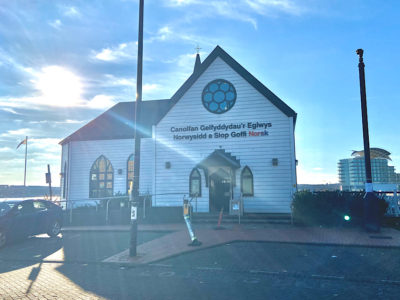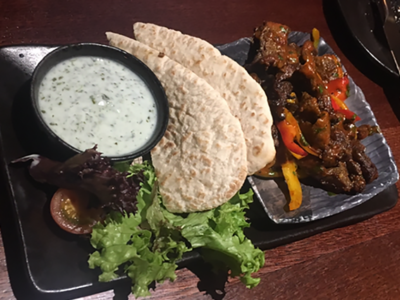Profile of free Cardiff magazines and webzines
Plastik – An online only magazine of culture and creative culture. Beginning as a music magazine, Plastik has evolved to encompass wider genres http://plastik.me
Crack – Irreverent and tongue-in-cheek, Crack is one for the hipster generation featuring art work, interview and reviews on the latest bands http://www.youlovecrack.com
Zero Core – A beautifully crafted magazine focusing on music, illustration and photography http://zerocore.co.uk
Miniature Music Press – A definitive guide to music in Cardiff featuring interviews and a great gig listings section www.themmp.tv
Buzz – The monthly entertainment magazine, What’s On guide of South Wales www.buzzmag.co.uk
Quench – Cardiff university’s student culture magazine. By students, for students.
Following the recent surge of free culture magazines and webzines in the Welsh capital, how do the publications stay popular, stay unique, and make their money?
How do you get your culture fix? Perusing shelves for the latest magazine, scouring the internet, or filling your bag with the myriad of free magazines on offer? After the closure of free magazine Kruger in 2010, the city was crying out for something to take its place. Several contenders have appeared, but how do they measure up?
What do these free-zines do to survive the tough economic climate, what about them is unique and how are they pulling in the readers?
Buzz magazine, a monthly What’s On, culture and entertainment guide distributed throughout South Wales celebrates its 20th anniversary this year, quite an achievement for a free magazine. Gareth Ludkin, the editor says, “I think it helps that we’re a What’s On guide, as opposed to a culture magazine because it gives us more flexibility with advertisers. We have got a broad range of subjects that we touch on which gives us a lot of advertising areas to hit.” The variety obviously works as 25,000 copies are distributed every month.
Plastik
Plastik online magazine began as a blog to support creator Marc Thomas’s application to get into the Cardiff journalism postgraduate course, but has since grown into a website which is now Marc’s full time job. The site focuses on creative culture across the city, with news, reviews and interviews.
To complement advertising revenue, Plastik has just finished its first sponsorship deal with Creative Cardiff, who pay to have their names attached to articles. Marc says, “That’s the kind of model we’re looking at and hopefully it will work out.”
Plastik has evolved from a music blog to a wide culture magazine, but Marc has no intention of moving to print. “Print isn’t something I would really do unless I took a completely different approach and went national. I think a national print magazine could work but not a local magazine. Especially one like Plastik as it is for a niche audience.”
Although Marc worries about financial issues he loves the freedom he gets from creating and running his own magazine. He says, “It’s brilliant and a lot of fun. Being free is worth its weight in gold.”
Zero Core
Zero Core timed its first issue to coincide with Swn festival. The free music quarterly, with a strong aesthetic focus was created by Jen Long of BBC fame, who asked Marc and designer Adam Chard of Croatoan Design to join her. Unusually for any magazine launch, especially a free magazine, the first issue made some money. Marc Thomas says, “It is rare that a magazine will make a profit on the first issue but we managed it. Jen has incredible advertising sales.”
Marc says, “Our brand was to set out to do a lovely thing and to make readers feel like they had something special, rather than just reading another magazine.”
Zero Core is available, “pretty much anywhere that’s cool in Cardiff and London.” Marc says there has been no trouble acquiring readers and that nearly all of their initial run of nine thousand copies has been distributed.
Matthew Keeble, 25, retail supervisor, in the Full Moon said, “I picked up Zero Core because it looked interesting and expensive, yet it’s free. I look forward to reading future issues.”
To stand out, Zero Core focuses on design and photography as well as music. They also offer a paid subscription, which for just £5 an issue will be posted anywhere in the world.
Crack
Crack is a culture magazine in newspaper form, appealing to the hipster generation. Editors Jake Applebee and Tom Frost are proud of their creation, citing its individuality and refusal to let advertisers influence their content, a common problem for free magazines.
Crack has recently expanded to London in the hope of national free press domination. How are Crack having such an impact? They are thinking much bigger than the competition. Newspaper sized sheets means cheaper printing and the chance to display big, bold artwork which readers love.
To build their brand, many of their relationships go beyond the magazine. Crack have moved into event and party planning, teaming up with big names such as Fabric and Smirnoff to host nights and gigs across the south of Wales and England.
Claire Reed, PhD student, 24, in Urban Outfitters said, “I read Crack whenever I get the chance. It’s cheeky, the artwork looks cool, and it has great content for a free magazine.”
Far from competing, each of these publications has carved out its own distinct niche. They attract different advertisers, provide a different physical experience, and provide different views on culture. Although there are financial difficulties, creating a brand around a magazine product appears very important, and exploring other outlets such as gigs, events and sponsorship seems a great way to achieve this. So perhaps instead of paying £4 for your favourite magazine, get hooked on some of the city’s best free publications for your culture fix next month.
Profile of free Cardiff magazines and webzines
Plastik – An online only magazine of culture and creative culture. Beginning as a music magazine, Plastik has evolved to encompass wider genres http://plastik.me
Crack – Irreverent and tongue-in-cheek, Crack is one for the hipster generation featuring art work, interview and reviews on the latest bands http://www.youlovecrack.com
Zero Core – A beautifully crafted magazine focusing on music, illustration and photography http://zerocore.co.uk
Miniature Music Press – A definitive guide to music in Cardiff featuring interviews and a great gig listings section www.themmp.tv
Buzz – The monthly entertainment magazine, What’s On guide of South Wales www.buzzmag.co.uk
Quench – Cardiff university’s student culture magazine. By students, for students.





